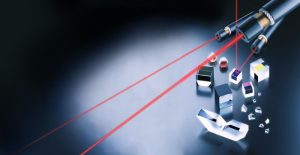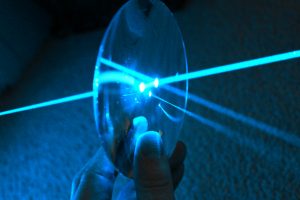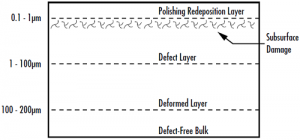

Every optic will have some level of subsurface damage below the top surface of the optic such as cracks, residual stresses, contaminants, and voids. These defects may be caused in the manufacturing process or inherent to the type or quality of the material used. When illuminated with a laser, subsurface damage can increase absorption and scatter, generating heat and leading to decreased throughput. These performance irregularities potentially lead to system failure when using high power lasers or when a system is under significant mechanical stress.

The grinding and polishing process leaves subsurface damage about 0.1µm to tens of microns below the polishing redepostition layer, or the Beilby layer. The redisposition layer is a top layer of the optic that is reflowed over fine surface scratches due to a chemical reaction during the polishing. The defect layer below the redeposition layer contains the majority of subsurface cracks and other defects and typically extends down 1-100µm beneath the optic’s surface. A deformed layer then separates this defect layer from the defect-free bulk material. Please refer the below figure.

Subsurface damage left behind from manufacturing processes.
Impurities may become trapped within the redeposition layer during polishing unless special laser-grade polishing and cleaning processes are used. Polishing with finer and finer grits can further reduce the amount of subsurface damage, but this damage cannot be removed completely. Polishing with finer grits improves the quality of the optic, but increases the amount of time required for polishing, which in turn increases the cost. An effective polishing process for laser optics ensures removal of deep subsurface damage, while an ineffective process simply hides the damage under the Beilby layer.